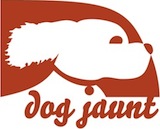Traveling with a pet dog between the U.S. and Canada: The fine print
Last May, the Take Paws team wrote a really useful post about the requirements for taking your dog (and yourself!) from the United States to Canada, which saves me all kinds of work. I’ll just add that when you’re returning to the U.S., you follow the CDC’s rules, which state (in relevant part) that “Dogs must have a certificate showing they have been vaccinated against rabies at least 30 days prior to entry into the United States.” Please note that this is a more stringent requirement than Canada’s (which “does not require a waiting period between the time the animal is vaccinated for rabies and the time the animal is imported into Canada”), and make your plans accordingly.
Last week, however, I learned something new about traveling with a pet dog to and from Canada. In the process of getting our NEXUS cards, which speed up both international border crossings between the U.S. and Canada and (in the form of Global Entry) international arrivals in most U.S. airports, we were told to pay attention to the dog food and treats we bring to Canada and then back again to the U.S.
Going from the United States to the province of British Columbia, you may not bring with you any “Pet food containing beef.” The quoted language comes from the sheet we were given, entitled “For Entry to Canada Province of British Columbia Agriculture Products.” I couldn’t find an on-line link for you; instead, I found the general rules for Canada (look under “Personal Imports”), from the Canadian Food Inspection Agency, which require that your pet’s food be of U.S. origin but don’t specifically prohibit beef. We are most likely to travel to and from Vancouver, in British Columbia, so I’ll be leaving the beef products at home.
Currently, you may not bring “Pet food and pet treats containing lamb or goat, whether dry, canned, fresh, semi-moist, or veterinarian prescribed” into the U.S. “unless label on bag or can shows US origin. Beef, chicken, fish, pork and vegetarian pet food are currently allowed from Canada with a label listing the ingredients.” The quoted language comes from the sheet we were given (entitled “Bringing Agricultural Products to the United States from Canada”), referencing “the MINIMAL RISK RULE, effective November 19, 2007.” For further details, or if you want to make sure this information is current at the time you’re traveling, call the U.S. Customs and Border Protection office in Blaine, WA (Agricultural Inspection) at 360-332-1831 (alternative numbers end in -2351 and -1640).
One final note: To be on the safe side, we were told, bring your pet’s food and treats in their original packaging, so you can prove that you’re following the rules. And don’t overlook your dog’s treats! They count too, and that’s exactly the kind of thing that would slip my mind.




